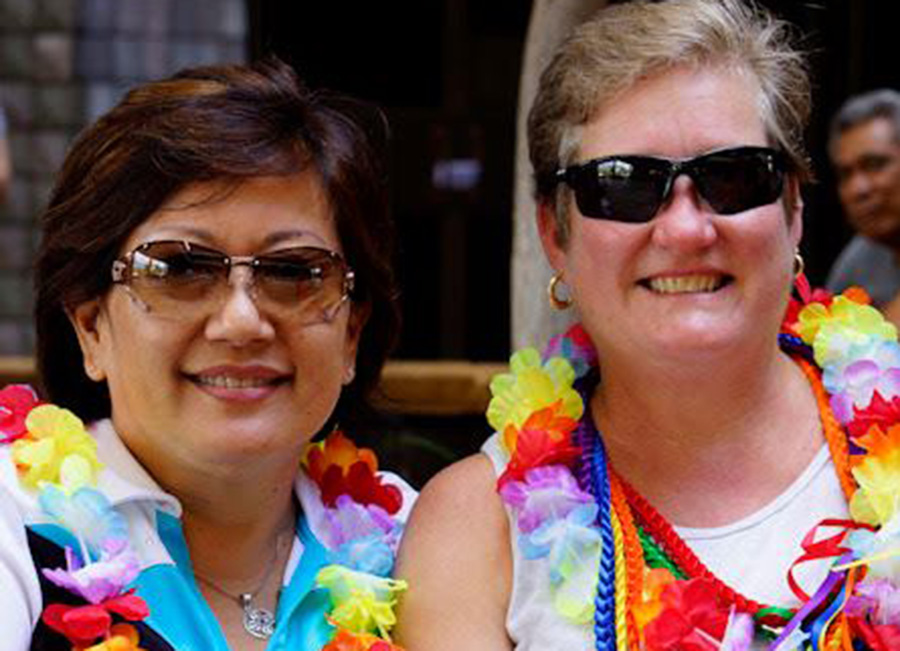By Rae N. Watanabe
In the shape of a question mark, she leaned forward in her chair and stared at her computer. Mouse in hand, she seemed frozen.
“Hi, Amber,” I greeted methodically as I walked by her office.
I had taken about five steps past her office door when I heard her call me.
I turned and she motioned me inside. “I was just sitting here deciding whether or not to go to Melissa Etheridge,” she whispered, as if sharing a juicy secret. “But I know Alex won’t go with me, and then you walk by! Do you want to go?”
“Of course I want to go. My husband won’t go either, and I miss gay culture.”
“Me, too.”
In so many ways, Amber is my community of one, and I suspect there are a lot of people like us across the country. Friends for over 30 years, we now happen to work at the same place. When we met, we were both in lesbian relationships. Today, we are both married to men.
Surely, this is no surprise to those familiar with the work of Professor Lisa Diamond. Diamond’s long-term study of women’s sexuality, published in 2008, showed fluidity that surprised people outside the bisexual community. Within the community, however, there seemed more a sense of validation.
Validation is, I suspect, one of the most important functions of community. However, creating a bisexual community in Hawaii is difficult. First, at any given moment, tourists make up a huge part of Hawaii’s population. In 2014, over eight million people visited Hawaii. In addition, military personnel constitute a significant part of the population of Oahu with over 49,000 people in 2016. A person who moves to Hawaii from elsewhere usually doesn’t stay long, a problem so well-known that Huffington Post dubbed them “turnover friends.” Transient populations rarely build solid, supportive communities, much less ones of sexual minorities.
In Hawaii, even the larger LGBTQ+ community is hardpressed to organize something as seemingly simple as Gay Pride. After years of poor showings in the traditional Pride month of June, 2016’s Pride Parade and Festival was in October and yielded gratifyingly positive results. The Parade seemed to go on and on. There were even bisexual flags flying from at least one group. The Festival was an undeniable success with hundreds of people, two music stages and dozens of booths. I attended with my oldest lesbian friends and ran into a few more old friends from my lesbian life. Watching the crowd, I couldn’t help but wonder how many were tourists and military, thus creating a fine, but fleeting, LGBTQ+ community.
It is almost impossible to build an enduring community of an invisible sexual minority like bisexuals because it is much easier to live in two worlds—the LGBTQ+ one and the straight one. No one notices us. We are assumed to be members of whichever group we are with at the time. In a sense, we are members of two communities. Do we really need another one exclusive to ourselves?
I don’t. Amber is enough; my LGBTQ+ friends are enough; and my so-called straight friends are enough. Mine is not a fractured community; it is more a multi-faceted one, one with which I have become content. A wise person once said, “Happiness is not having what you want, but wanting what you have.” I want what I have.
Rae N. Watanabe has been teaching English at Leeward Community College, one of 10 campuses of the University of Hawaii System, for 22 years. She is the co-founder (along with the late Joan Souza) of the Safe Zone Program, a proactive program to make campuses safer for LGBTQ+ students, faculty, and staff in the entire UH System.
Featured image: Rae (left) with her friend Melissa, who is part of Rae’s “lesbian family”

